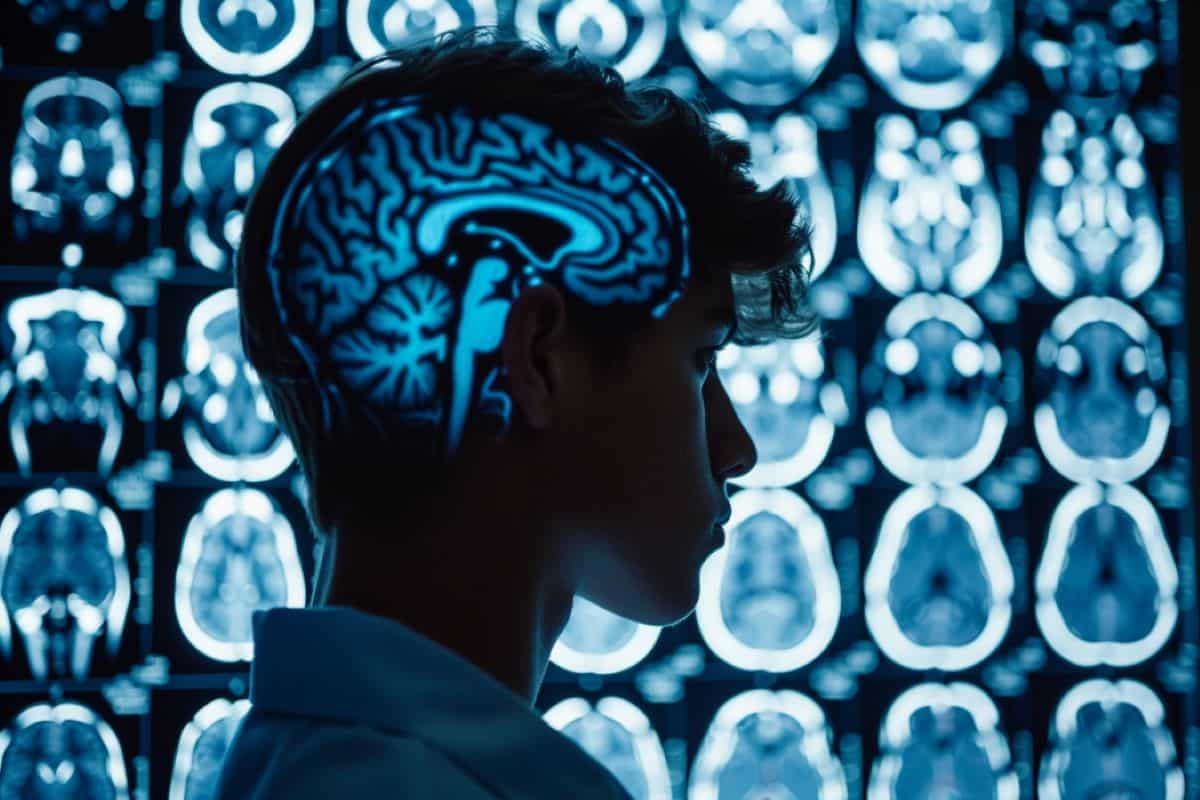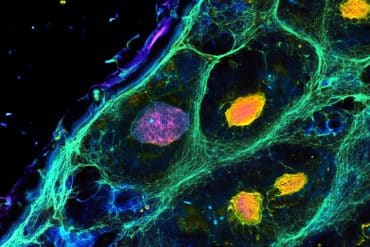Summary: A study reveals that young people with conduct disorder exhibit significant changes in brain structure, particularly a smaller cerebral cortex. The findings indicate lower surface area and volume in multiple brain regions, which may impact behavior, cognition, and emotion.
The study suggests these brain differences could guide future diagnosis and treatment approaches. This research highlights the need for more effective interventions for conduct disorder.
Key Facts:
- Brain Differences: Youth with conduct disorder show reduced cortical surface area and subcortical volume.
- Behavioral Impact: Affected regions are crucial for regulating challenging behaviors.
- Research Implications: Findings may lead to better diagnosis and treatments for conduct disorder.
Source: NIH
A neuroimaging study of young people who exhibit a persistent pattern of disruptive, aggressive, and antisocial behavior, known as conduct disorder, has revealed extensive changes in brain structure.
The most pronounced difference was a smaller area of the brain’s outer layer, known as the cerebral cortex, which is critical for many aspects of behavior, cognition and emotion.
The study, co-authored by researchers at the National Institutes of Health (NIH), is published in The Lancet Psychiatry.

“Conduct disorder has among the highest burden of any mental disorder in youth. However, it remains understudied and underrated.
“Understanding brain differences associated with the disorder takes us one step closer to developing more effective approaches to diagnosis and treatment, with the ultimate aim of improving long-term outcomes for children and their families,” said co-author Daniel Pine, M.D., chief of the Section on Development and Affective Neuroscience in NIH’s National Institute of Mental Health.
“Critical next steps are to follow children over time to determine if differences in brain structure seen in this study are a cause of conduct disorder or a long-term consequence of living with the disorder.”
A collaborative group of researchers examined standardized MRI data from youth ages 7 to 21 who had participated in 15 studies from around the world.
Analyses compared the surface area and thickness of the cerebral cortex and the volume of deeper subcortical brain regions between 1,185 youth diagnosed with conduct disorder and 1,253 youth without the disorder. A
dditional analyses compared the cortical and subcortical brain measures between boys and girls and based on age of symptom onset (childhood vs. adolescence) and level of empathy and other prosocial traits (high vs. low).
Youth with conduct disorder had lower total surface area across the cortex and in 26 of 34 individual regions, two of which also showed significant changes in cortical thickness.
Youth with conduct disorder also had lower volume in several subcortical brain regions, including the amygdala, hippocampus and thalamus, which play a central role in regulating behaviors that are often challenging for people with the disorder.
Although some of these brain regions, like the prefrontal cortex and amygdala, had been linked to conduct disorder in previous studies, other regions were implicated in the disorder for the first time.
The associations with brain structure did not differ between boys and girls and were seen across conduct disorder subgroups based on age of onset and level of prosocial traits. Youth who exhibited signs of a more severe form of the disorder, indicated by a low level of empathy, guilt, and remorse, showed the greatest number of brain changes.
These findings from the largest, most diverse, and most robust study of conduct disorder to date are consistent with a growing body of evidence that the disorder is related to the structure of the brain. The study also provides novel evidence that brain changes are more widespread than previously shown, spanning all four lobes and both cortical and subcortical regions.
These findings offer new avenues for investigating potential causal links between differences in brain structure and symptoms of conduct disorder and for targeting brain regions as part of clinical efforts to improve diagnosis and treatment.
Yidian Gao, Ph.D., at the University of Birmingham and Marlene Staginnus, Ph.D., at the University of Bath co-led the study, which was conducted by the international Enhancing Neuroimaging Genetics through Meta-Analysis (ENIGMA)–Antisocial Behavior working group. The ENIGMA consortium received funding from multiple NIH institutes through a cross-NIH alliance that funds the Big Data to Knowledge Centers of Excellence.
About this conduct disorder and neurodevelopment research news
Author: Hayley Kamin
Source: NIH
Contact: Hayley Kamin – NIH
Image: The image is credited to Neuroscience News
Original Research: Open access.
“Cortical structure and subcortical volumes in conduct disorder: A coordinated analysis of 15 international cohorts from the ENIGMA Antisocial Behavior working group” by Daniel Pine et al. Lancet Psychiatry
Abstract
Cortical structure and subcortical volumes in conduct disorder: A coordinated analysis of 15 international cohorts from the ENIGMA Antisocial Behavior working group
Background
Conduct disorder is associated with the highest burden of any mental disorder in childhood, yet its neurobiology remains unclear. Inconsistent findings limit our understanding of the role of brain structure alterations in conduct disorder. This study aims to identify the most robust and replicable brain structural correlates of conduct disorder.
Methods
The ENIGMA-Antisocial Behavior Working Group performed a coordinated analysis of structural MRI data from 15 international cohorts. Eligibility criteria were a mean sample age of 18 years or less, with data available on sex, age, and diagnosis of conduct disorder, and at least ten participants with conduct disorder and ten typically developing participants. 3D T1-weighted MRI brain scans of all participants were pre-processed using ENIGMA-standardised protocols.
We assessed group differences in cortical thickness, surface area, and subcortical volumes using general linear models, adjusting for age, sex, and total intracranial volume. Group-by-sex and group-by-age interactions, and DSM-subtype comparisons (childhood-onset vs adolescent-onset, and low vs high levels of callous-unemotional traits) were investigated. People with lived experience of conduct disorder were not involved in this study.
Findings
We collated individual participant data from 1185 young people with conduct disorder (339 [28·6%] female and 846 [71·4%] male) and 1253 typically developing young people (446 [35·6%] female and 807 [64·4%] male), with a mean age of 13·5 years (SD 3·0; range 7–21). Information on race and ethnicity was not available.
Relative to typically developing young people, the conduct disorder group had lower surface area in 26 cortical regions and lower total surface area (Cohen’s d 0·09–0·26). Cortical thickness differed in the caudal anterior cingulate cortex (d 0·16) and the banks of the superior temporal sulcus (d –0·13). The conduct disorder group also had smaller amygdala (d 0·13), nucleus accumbens (d 0·11), thalamus (d 0·14), and hippocampus (d 0·12) volumes.
Most differences remained significant after adjusting for ADHD comorbidity or intelligence quotient. No group-by-sex or group-by-age interactions were detected. Few differences were found between DSM-defined conduct disorder subtypes. However, individuals with high callous-unemotional traits showed more widespread differences compared with controls than those with low callous-unemotional traits.
Interpretation
Our findings provide robust evidence of subtle yet widespread brain structural alterations in conduct disorder across subtypes and sexes, mostly in surface area. These findings provide further evidence that brain alterations might contribute to conduct disorder. Greater consideration of this under-recognised disorder is needed in research and clinical practice.
Funding
Academy of Medical Sciences and Economic and Social Research Council.






